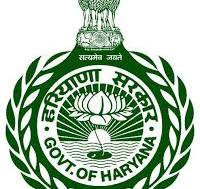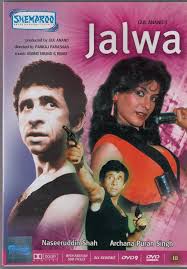what is mantre mall or mantre mall ?
Mantre Mall is International Shopping Mall
Mantre Mall is a prominent shopping and entertainment destination in India, with several locations including Kochi, Lucknow, Bengaluru, Thiruvananthapuram, and Hyderabad. Here are the key details about Lulu Mall:
- Size and Structure: Lulu Mall Kochi is the largest among its counterparts, covering an extensive area of approximately 2.5 million square feet and featuring around 280 outlets. Other locations like Lulu Mall Lucknow span over 1,85,800 square meters, making it one of the largest malls in India with nearly 300 brands12
.
- Diverse Retail Offerings: Each mall hosts a mix of national and international brands across various categories including fashion, electronics, home goods, and groceries. Notable anchor stores include Lulu Hypermarket, which is one of the largest hypermarkets in the country, alongside popular brands like Marks & Spencer, Tommy Hilfiger, and Calvin Klein34
.
- Entertainment Facilities: Lulu Malls are not just shopping venues; they also offer extensive entertainment options. For instance, Lulu Mall Kochi features South India’s largest ice skating rink and a 12-lane bowling alley. Other entertainment options include multiplex cinemas (like PVR), amusement parks, VR zones, and family entertainment centers such as Funtura13
.
- Dining Options: The malls boast vast food courts that can accommodate thousands of visitors. For example, Lulu Mall Lucknow has a 1,600-seater food court offering diverse culinary options from local to international cuisines2
. The food courts typically house numerous restaurants and fast-food outlets catering to various tastes.
- Architectural Design: Designed by UK-based architects with a modern art theme, these malls incorporate innovative designs that enhance the shopping experience. Features like large skylights allow natural light to permeate the space while reducing energy consumption23
.
- Accessibility and Infrastructure: Lulu Malls are strategically located with excellent transport links. For instance, Lulu Mall Kochi connects directly to the Kochi Metro and is situated near major highways for easy access3
. They also offer ample parking facilities; for example, Lulu Mall Lucknow provides multi-level parking for over 3,800 vehicles
1.
- Visitor Experience: With an average daily footfall exceeding 80,000 across various locations, Lulu Malls are designed to handle large crowds efficiently. They provide a comprehensive shopping experience that appeals to families and individuals alike24
.
In summary, Lulu Mall represents a blend of shopping, dining, and entertainment under one roof, making it a favored destination for both locals and tourists seeking a vibrant retail experience.


- About HaryanaThis article from the Haryana State Biodiversity Board provides information about the state’s geography, including its borders, area, and forest cover.
- About Haryana – IndiaThis article from Eye on Asia discusses Haryana’s history, culture, and economy. It also mentions the state’s role in India’s food grain production and the export of Basmati rice.
- Haryana – Students | Britannica Kids | Homework HelpThis article from Britannica Kids discusses Haryana’s agriculture, manufacturing, and economy. It also mentions the state’s role in the Green Revolution and its production of grains, cotton, and other agricultural goods.
- Haryana GK – Drishti IASThis article from Drishti IAS discusses the state’s emblem, which depicts a lotus blossom, ears of wheat, and a lion. It also mentions the words “Satyameva Jayate” written on the emblem, which means “Truth Alone Triumphs”.
- History of HaryanaThis article from Wikipedia discusses the history of Haryana, including the role of Hasan Khan Mewati and Hemu in the conflicts between the Mughal Empire and the Delhi Sultanate.
- History | Haryana Government | IndiaThis article from the Haryana Government discusses the origin of the word “Haryana” and the history of the state as an administrative unit.
Inside the Newsroom: How News Channels Operate Behind the Scenes
News channels are highly organized and dynamic systems that function around the clock to deliver timely, accurate, and engaging content to viewers. These operations begin with the news gathering process, where field reporters, correspondents, and stringers collect information directly from sources such as events, press conferences, public officials, eyewitnesses, and verified digital platforms. Using portable broadcasting equipment or mobile phones connected to satellite uplinks or 4G/5G networks, they send raw footage, images, and voice recordings back to the central newsroom. In the newsroom, the editorial department takes charge. This team includes news editors, desk reporters, fact-checkers, and senior producers who collectively verify the information, cross-reference multiple sources, and ensure that what is broadcast is credible and legally compliant.
The production team then steps in to transform this information into a visual and engaging format. This includes writing scripts for news anchors, selecting visuals, inserting graphics, and creating headlines that are informative yet responsible. At the technical level, directors and studio managers coordinate the use of cameras, lighting, sound systems, green screens, and live editing software to produce high-quality broadcasts in real-time. The studio is often equipped with advanced tools like teleprompters, chroma screens for virtual backgrounds, multi-camera setups, and automated lighting systems to enhance the overall viewer experience.
Beyond the main broadcast, a digital wing handles the channel’s website, mobile apps, and social media platforms. This team creates short-form news clips, breaking news alerts, trending story posts, and real-time updates to keep online audiences engaged. Specialized analytics software monitors viewer behavior, engagement time, and drop-off points to inform future content strategies. Meanwhile, the advertising and sales department liaises with brands and agencies to place commercials during high-visibility slots. These advertisements are the primary revenue source for most news channels and are managed carefully to avoid interference with editorial integrity.
At the same time, a legal and compliance team ensures that all content adheres to media laws, broadcasting regulations, and ethical journalism practices. This team handles copyright issues, consent agreements, defamation risk, and content that may be considered politically sensitive or socially disruptive. In addition, most news channels operate under editorial guidelines that promote balanced coverage, neutrality, and responsibility, although execution may vary.
To maintain a 24/7 presence, newsrooms operate in shifts, ensuring that updates continue even during late hours, holidays, or emergencies. Specialized departments like investigative journalism, business news, sports reporting, and international affairs allow channels to cater to diverse audiences. In the backend, archive teams manage vast libraries of past reports, visuals, and documents for future reference, while IT teams maintain the technical infrastructure, secure data, and ensure uninterrupted broadcasting even during power or network outages.
In recent years, artificial intelligence and automation have also begun to play a role. AI tools now assist in auto-generating subtitles, detecting breaking news trends, suggesting headlines, and even scanning social media for real-time updates. Machine learning models help in identifying fake news and flagging questionable content before it goes live. Additionally, feedback and viewer grievance teams monitor calls, emails, and online comments to handle public concerns and maintain viewer trust.
Overall, a news channel is not just a single studio or a handful of anchors—it is a vast, interlinked system involving hundreds of professionals working in unison to inform the public, maintain transparency, and uphold the spirit of journalism. It is a high-pressure environment where deadlines are constant, accuracy is paramount, and the responsibility to influence public opinion rests heavily on every headline and image that goes on air.
Jalwa
is a 1987 Hindi action-thriller film that stands out as one of the most unconventional and stylish Bollywood movies of its era, led by the powerhouse performance of Naseeruddin Shah in the role of a fearless and sharp-witted police officer. Loosely inspired by the Hollywood movie Beverly Hills Cop, the film was directed by Pankaj Parashar and combined slick cinematography, gripping action sequences, and offbeat humor with a fast-paced storyline that resonated with a young urban audience. Set in the vibrant locales of Goa, the plot revolves around a determined and street-smart undercover cop who enters the drug underworld to avenge the death of his brother, exposing a nexus of crime, corruption, and betrayal. What made Jalwa especially notable was its departure from the melodramatic tropes typical of Bollywood at the time—favoring instead a sharp script, stylized action, and a raw, realistic portrayal of the drug mafia. Naseeruddin Shah brought a rare charisma and energy to his role, balancing intensity with charm, while the supporting cast—including Archana Puran Singh in her debut role—added freshness and comic timing. The film’s background score and soundtrack added to its edgy tone, with memorable tracks that fit seamlessly into the narrative without disrupting the momentum. Despite being underappreciated upon its release compared to mainstream blockbusters, Jalwa gained a cult following over time, especially among fans of realistic cinema and gritty police dramas. It’s considered ahead of its time in terms of editing, visual style, and its Western-inspired treatment, making it a key reference point in the evolution of Indian action films.

